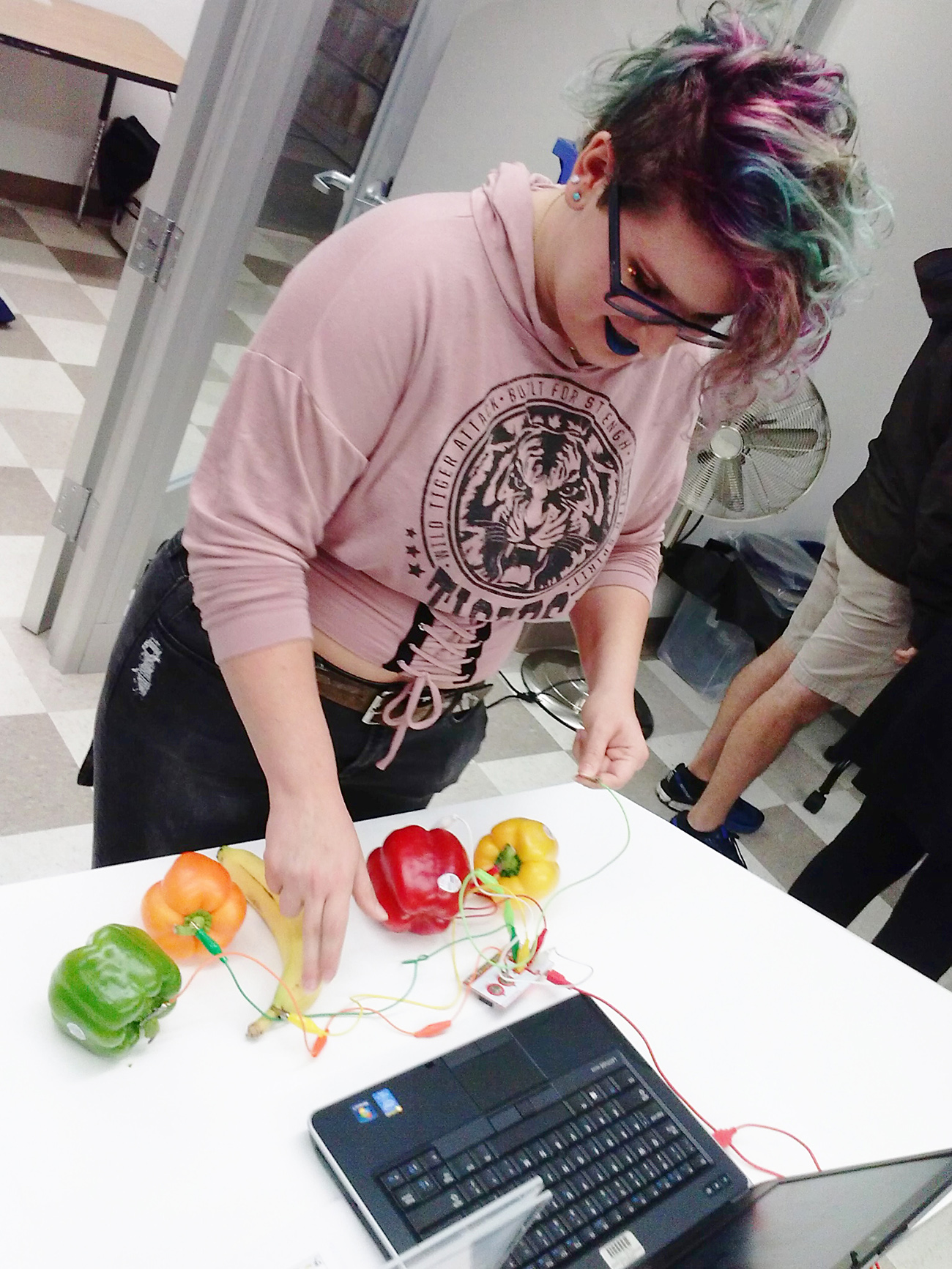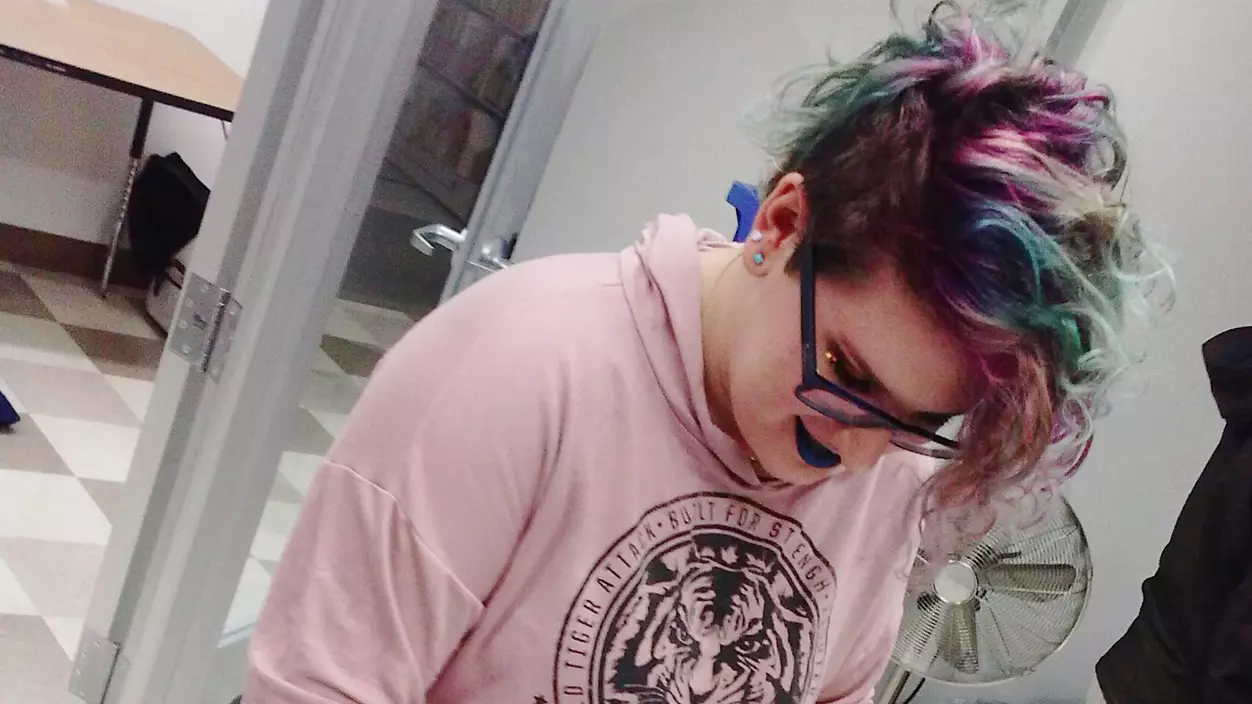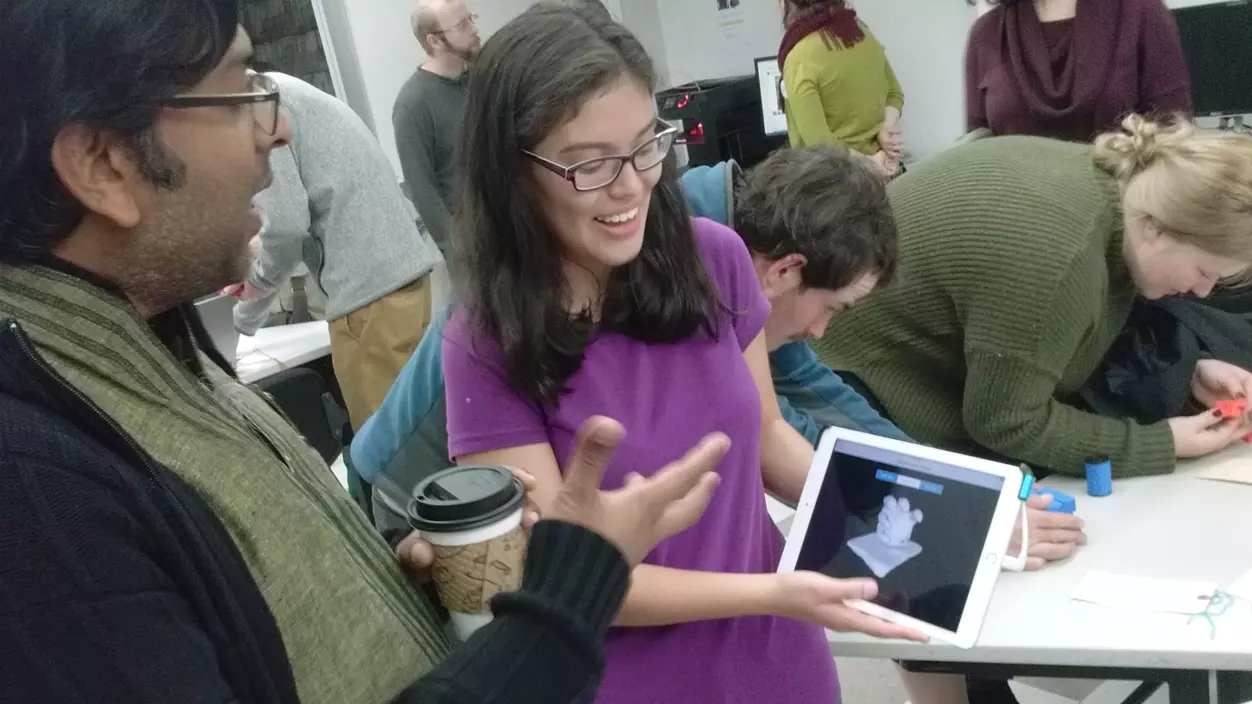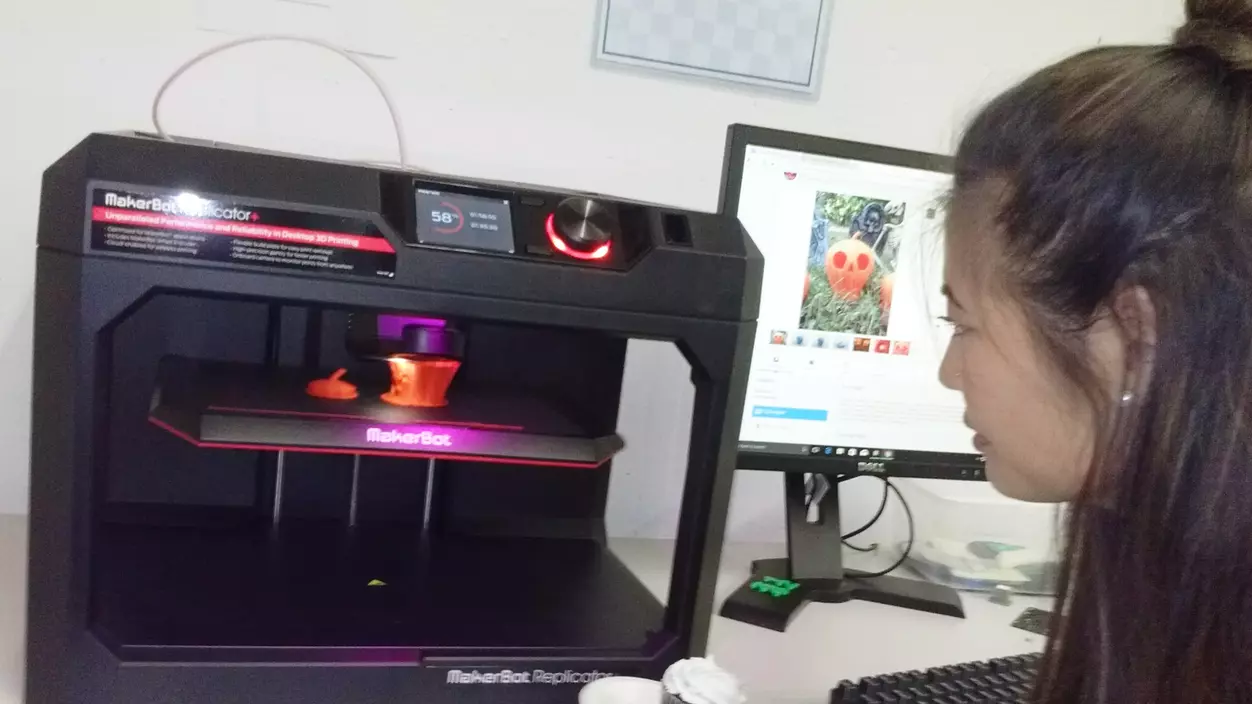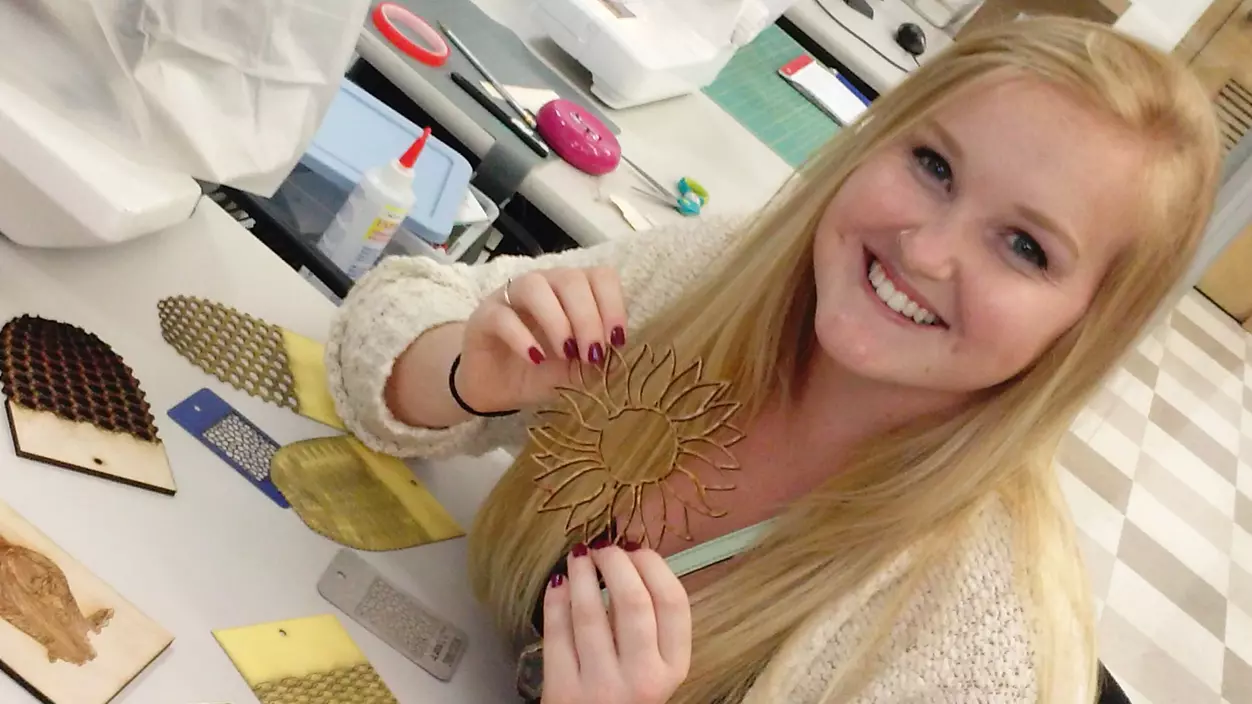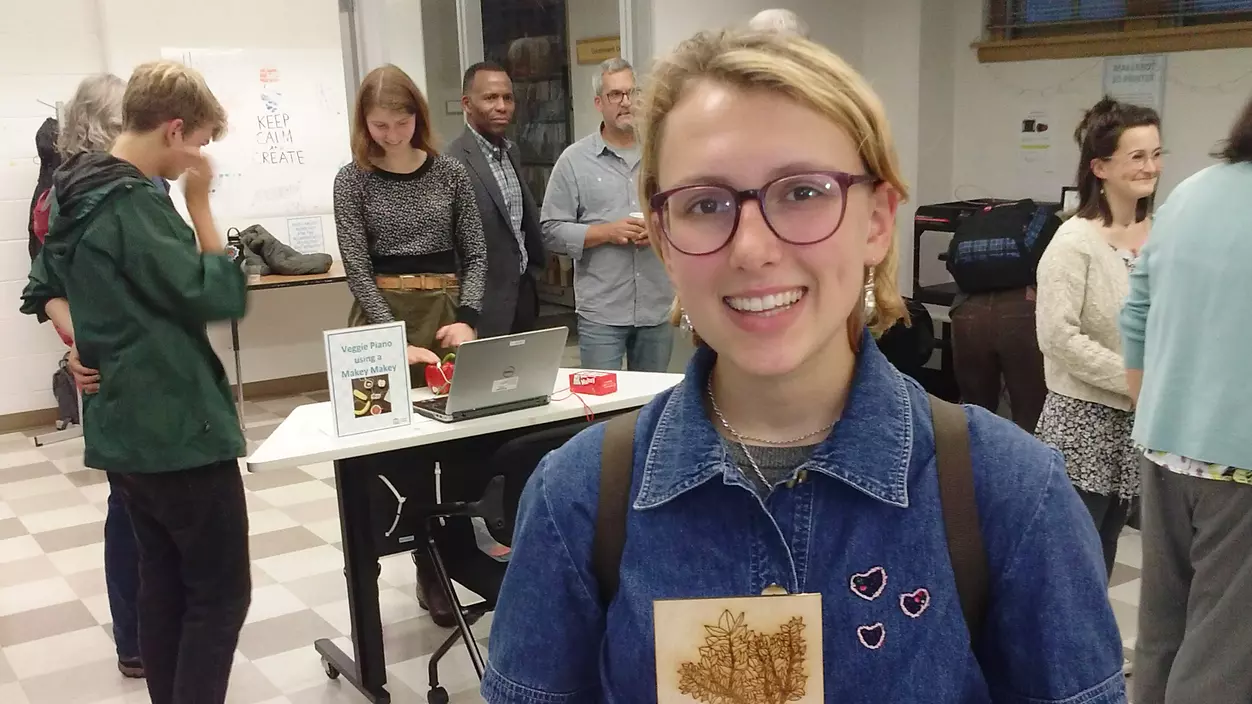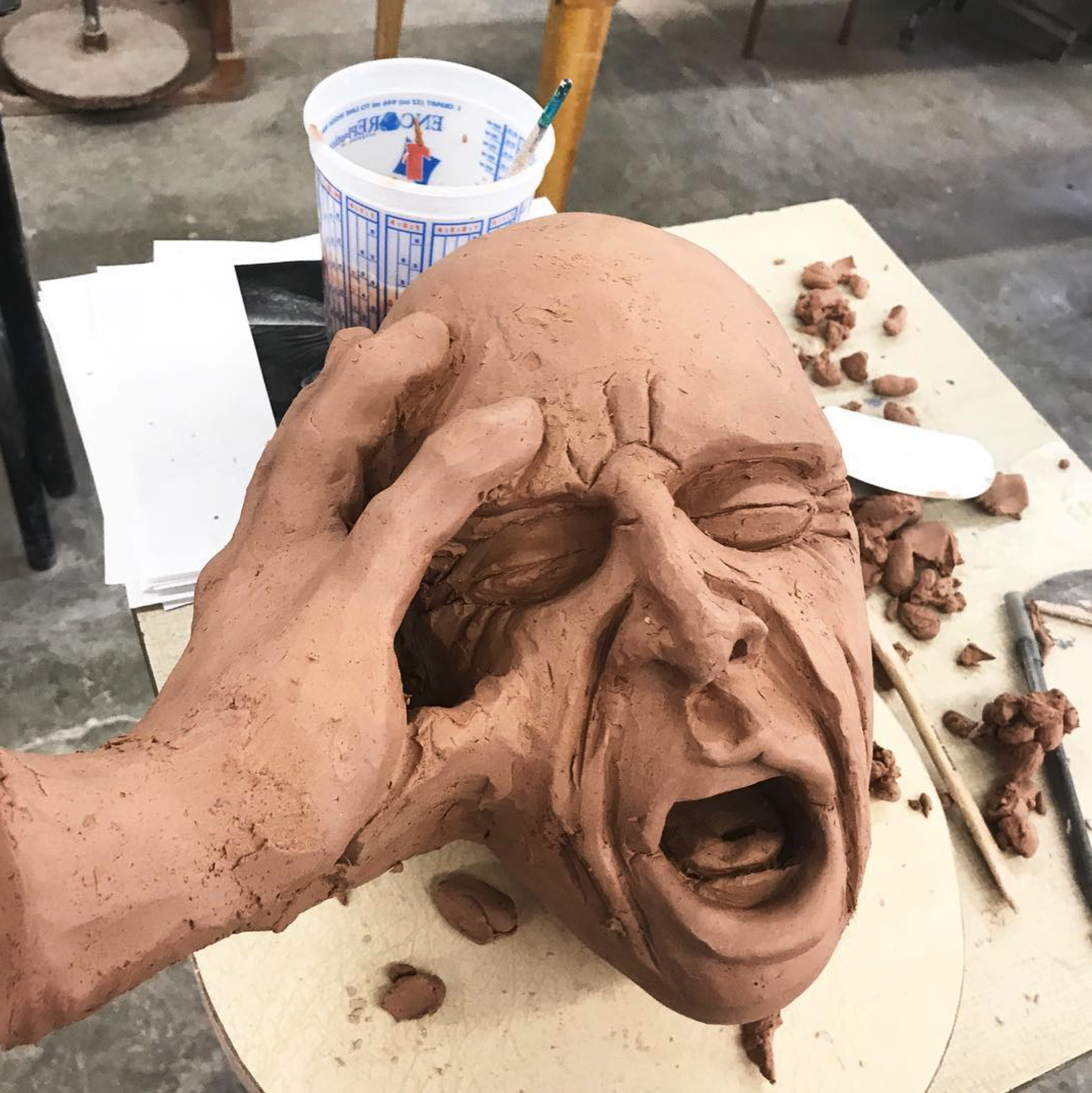“NO FEAR” reads the yellow sign in the brightly lit room just down the stairs at Collins Memorial Library.
Yup. No fear is exactly what a student needs to turn some wild idea they dreamed up over coffee into a real “thing”—a thing you can touch, see, and use.
Welcome to the Makerspace: a place, Cambridge Dictionary tells us, “where people can come together to create or invent things, either using traditional crafts or technology.” Puget Sound launched its new Makerspace this fall and held an open house for campus members.
Coming in, the first thing visitors encountered was a “Veggie Piano” using Makey Makey software. Wired to a laptop were four bell peppers and a banana. Touch a veggie, and you’d get a note. Keep going, and you’d have a tune. Off to the left was a 3D printer tracking relentlessly back and forth, creating a miniature Halloween pumpkin out of a biodegradable polyester filament, layer by layer.
Look in anytime of the week, and you might find students full-on at it: clattering on a sewing machine; prodding with a soldering iron; slicing cardstock with the paper cutter: all patiently making whatever “it” is.
Siddharth Ramakrishnan, neuroscience program director, looks ahead and thinks big. “My hope is that students will be creators and not consumers,” he says. “If you want a microscope, you can 3D-print the parts and put it together. If cells need transport in a petri dish, you could make a dish specific to your needs.”
Physical therapy students could print out knee joints, and biology students could re-create delicate bird specimens from Puget Sound Museum of Natural History, he says. Whole classes will collaborate on projects where they design, create, and experiment with the physical elements of their studies. Ramakrishnan says faculty interest is strong.
Two years ago the Makerspace was little more than a bright idea. Faculty conversations quickly became a reality as librarians, professors, and staff found the space, secured a budget, and bought equipment with a National Science Foundation grant.
Get to know some of the Makerspace users! See the photos below to learn more about how students are using the Makerspace.
